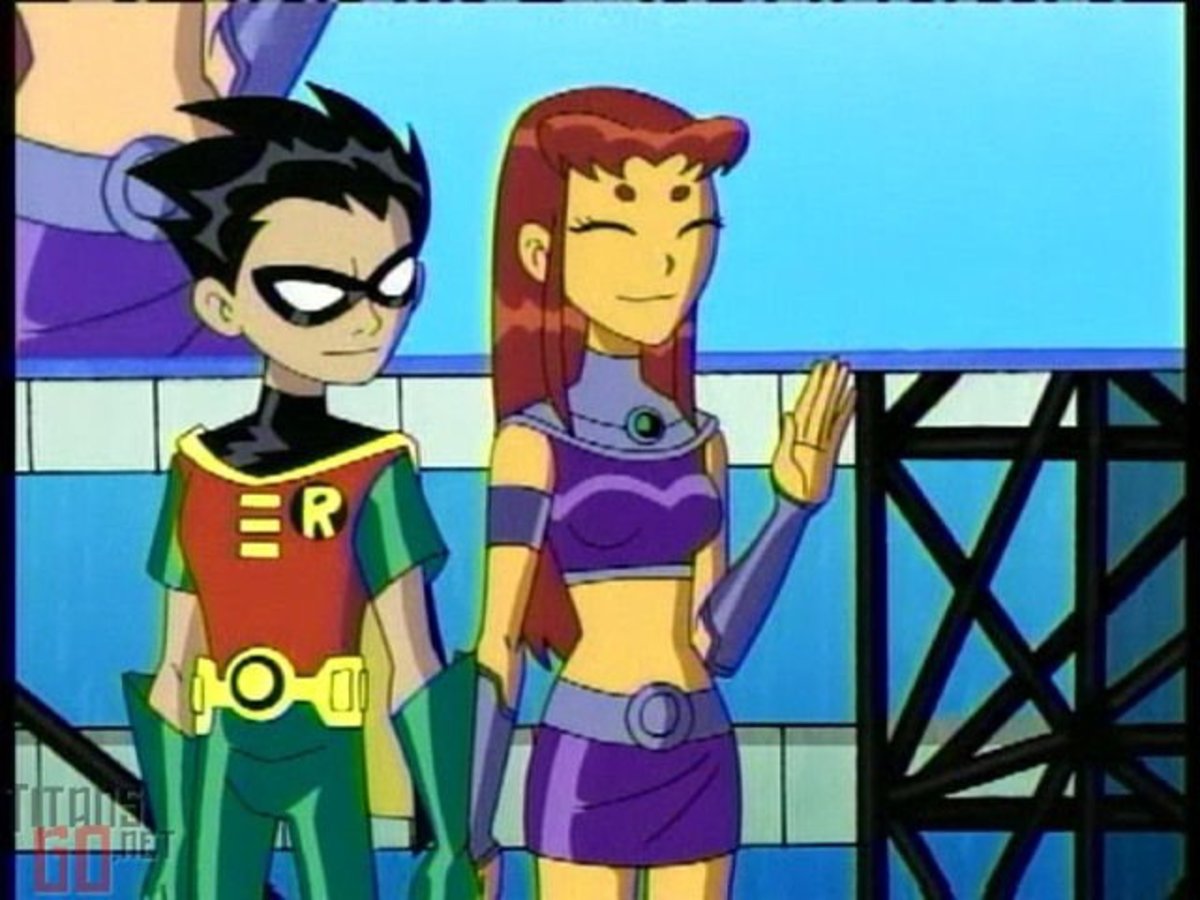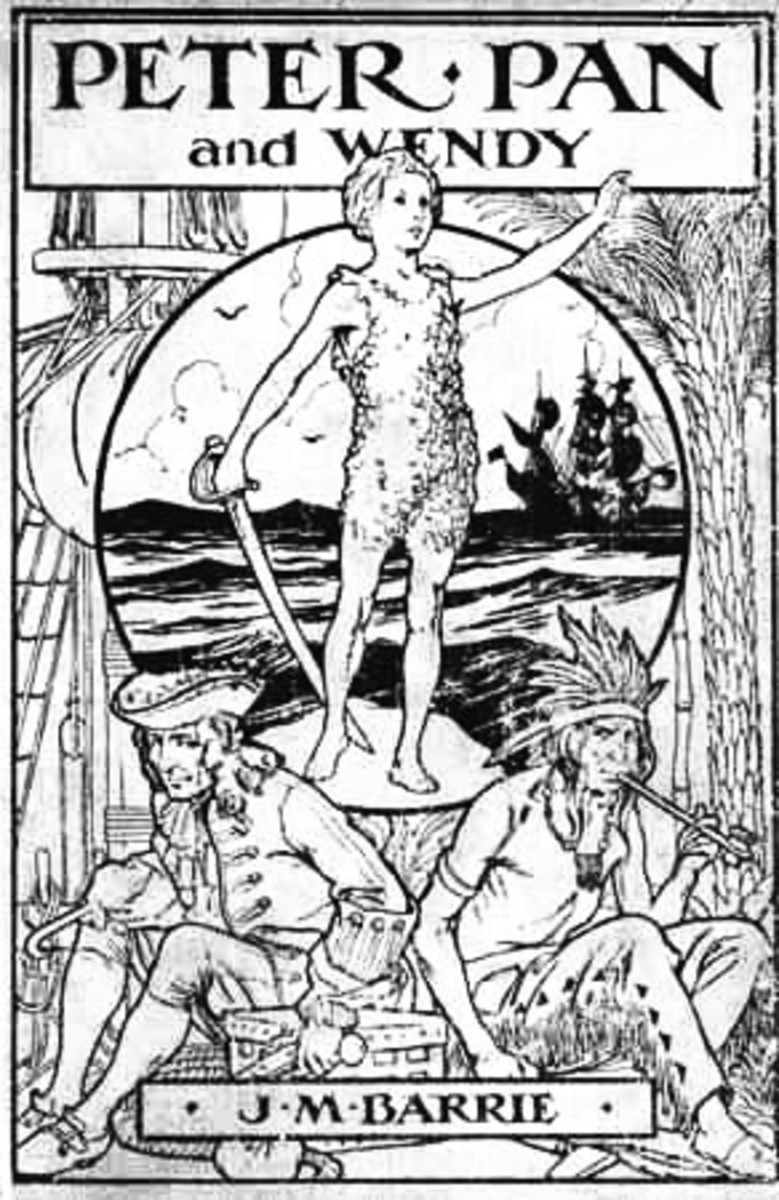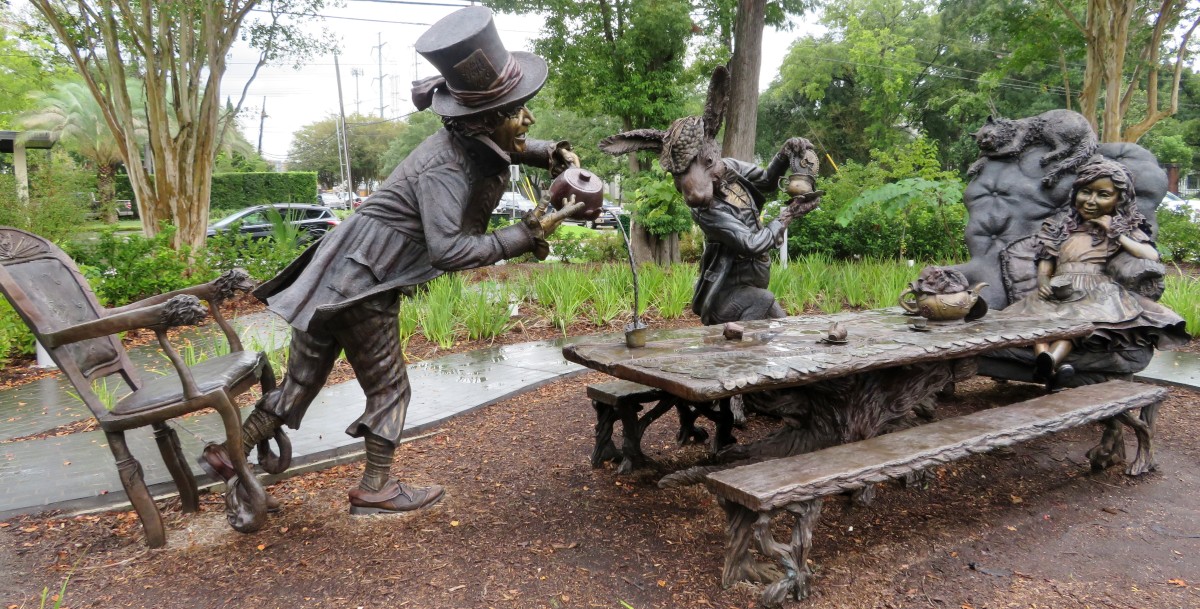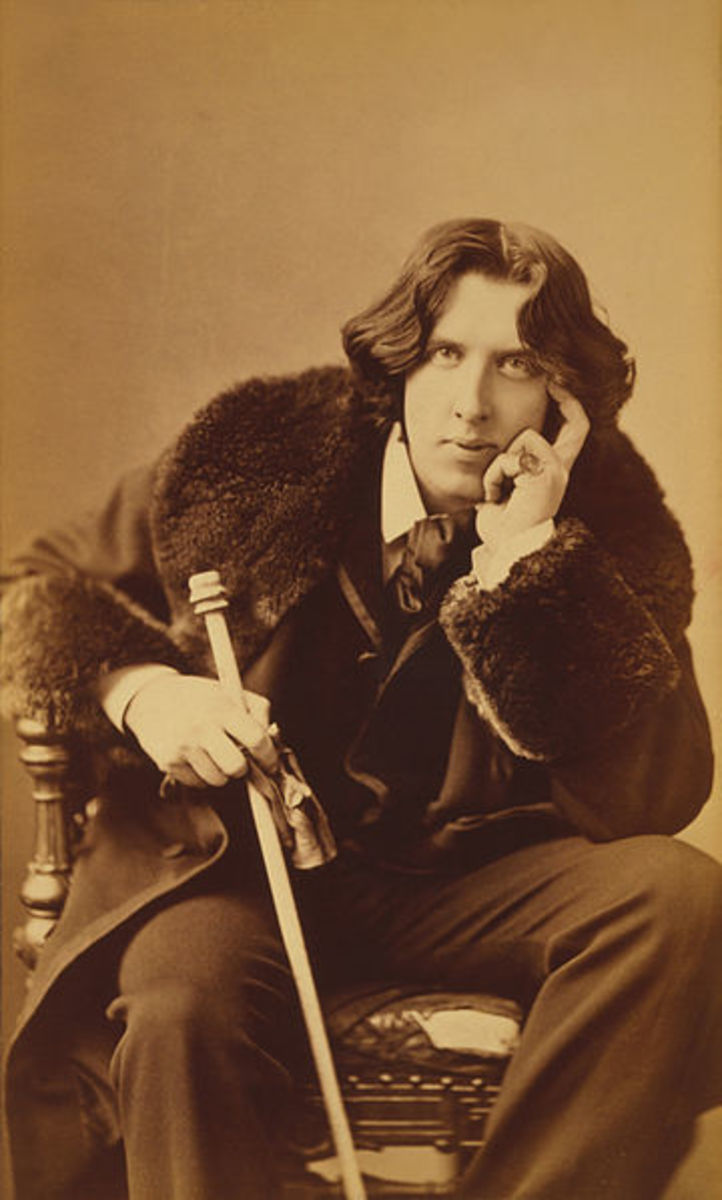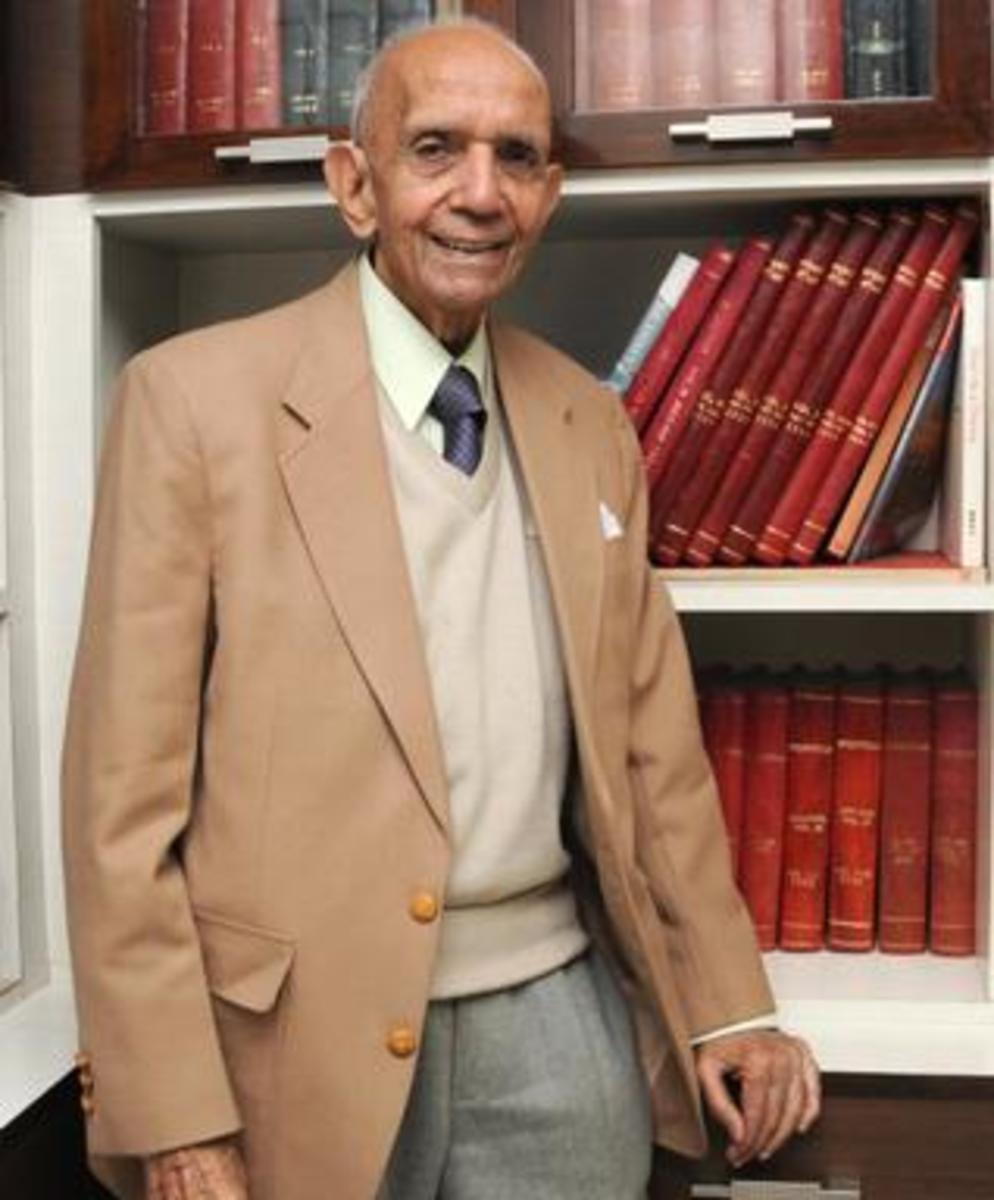Wonderland and Neverland: Extraordinary Worlds
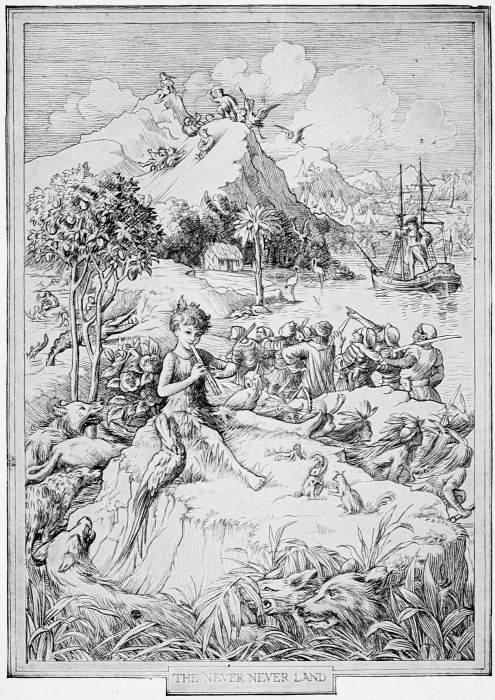
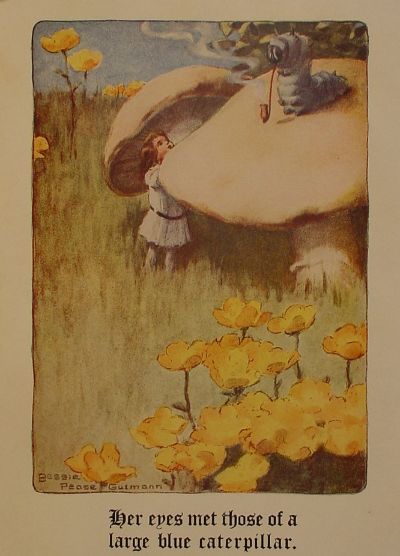
Though J.M Barrie’s Peter Pan and Lewis Carroll’s Alice’s Adventure in Wonderland both seem like pieces of children’s literature, they do have a dual audience. They are entertaining for children, but to adults, the stories give deeper and more profound allegories of the realities of life. For children who have read them again as adults, it adds whole new dimension to the meanings. Each novel explores the extraordinary world through the eyes of children, Alice being new to this strange environment, while Peter is closely familiar with it. As these worlds are places that can only be visited by children, there are obvious similarities between the two books. Furthermore, the worlds’ existences both come through dreams; With Peter Pan, Peter and the Neverland are first heard of when Mrs Darling is ‘tidying up her children’s minds’, while with Wonderland¹, Alice dreamt the whole world up and ‘what a lovely dream it had been’.
However, there are also several obvious differences between the extraordinary worlds; for one, while the Neverland is dreamt about by children, it was also appears to exist in reality as we see when Wendy is grown up, but still talks to Peter, who expects her ‘to fly away’ with him. On the other hand, Alice’s world only exists in a child’s ‘dream of Wonderland’. Another striking difference is that of clarity. In Wonderland things happen without reason; such as a baby that suddenly begins to ‘turn into a pig’ and anthropomorphised animals like ‘The Frog-Footman’. Peter Pan, on the other hand, it is not one of those ‘fanciful stories’ where ‘people can talk to animals freely’. Even with the extraordinary events like flying, it is at least explained, ‘You just think of lovely wonderful thoughts,’ whereas in Wonderland things happen without logic; for example ‘the pebbles were all turning into little cakes’ without an explanation as to why. Absurd events like these would be considered enjoyable for both adults and children, but in many cases, there will be an underlying meaning that only adults will grasp; for example, the Caucus-race has sometimes been seen as Carroll’s criticism of politicians, who seem to go round and round in circles when debating and not actually accomplishing anything.
No one grows up in the Neverland and it is one of the few occasions in Peter Pan where there is no explanation as to why; but it is how Peter is always a child. Like any child, Peter is afraid to grow up; as he clearly explains ‘I don’t want to be a man.’ The extraordinary world has had this affect on him, for it has been a place to bury his pain from when he saw his ‘window was barred’ by his mother. This sense of rejection made him go to the Neverland where he could forget the troubles of the ‘real’ world, where you grow up and have to face your problems instead of running from them. In this way, the extraordinary world is not just a sanctuary, but also a prison, for even those who want to go back, like John, who could only remember ‘his parents vaguely’. For a child, they would merely see this a the literal result of being in the Neverland, but adults would be able to see the more metaphorical meaning, which is that people often suppress memories of things that they find too difficult to deal with.
Wonderland, however, shows that Alice wishes to return to reality more than anything; so though it is an awfully confusing place to be, it also makes her appreciate her real home. It is also a learning experience, for Alice always considered herself quite knowledgeable and tries to act in a very grown up manner, but through her adventure in Wonderland she has to deal with a world of nonsense, where ‘everyone is mad’, in which case ‘smarts’ are not essential, but instead charisma. This skill is practiced several times, like when she has to repeat ‘You are old, Father William’. Again, children would see this as just a nonsense poem, but it actually a farce of how the elderly are thought unable to do things anymore.
Though the extraordinary worlds are seemingly designed for children, they are not without their dangers. Peter Pan explores the threats of the Neverland through one main antagonist Captain Hook and his ‘sidekick’, Smee, while Alice is threatened more generally by her lack of understanding about this strange environment. The more physical form of this threat is the ‘Queen of Hearts’, but as it is mentioned she actually ‘never executes nobody’. This suggests that the more immediate danger is within the world of Peter Pan, where it is indeed possible to die. Captain Hook is a pirate, whose hand Peter cut off and fed to the crocodile, that has since been stalking Hook for another taste of his flesh. Because of this, Hook wants to kill ‘Peter Pan, who first gave the brute its taste’ for him. In the Neverland, it appears that the antagonist wants revenge, but in Wonderland, the Queen will want ‘off with his head’ for just planting the wrong colour roses. This would suggest the extremity of Wonderland is much greater, or possibly, through Alice’s imagination, the characters have a much shorter temper, as she herself does. However, it could also be argued in the case of Tinker Bell, who only ‘has room for one feeling at a time’, meaning that when she is jealous, she is just as dangerous and hot headed as the Queen of Hearts. Where the extreme reaction in Wonderland comes from pure irrationality, Barrie’s characters take on a more pantomime-like emotion, (perhaps due to the fact that it was originally a stage-play). These dangers that are explored are common features of a children’s story. Nightmarish aspects such as being kidnapped by pirates or the possibility of a house you are in being set alight gives the sense of risk and adventure; the author’s intent being to enthuse excitement and tension into the reader. Children would find this adventure thrilling, but unlike adults would not be aware of the extremity the danger would be if it were real.
Would you rather visit Neverland or Wonderland?
The Neverland has different effects on different people; for example, the boys seem to revert to an even more childish state than that of what they were when they were in the ‘real’ world; their traits becoming exacerbated. Michael for instance becomes more argumentative. He would often say ‘I won’t, I won’t’ at home when it was time for something he didn’t like, but now he does it to the point of contradicting himself. Tootles asks ‘will you let me be baby?’ and Michael replies, ‘No, I won’t,’ but less than a page later he objects to Wendy and says ‘I’m too big for a cradle,’ which means he did not want to be the baby, but nor did he want anyone else to be able to. This shows that he has become more stubborn and capricious than before. However, with the girls, it is quite the opposite. Wendy goes to the Neverland, and instead of becoming more of a child, she becomes more of a woman by being the boys’ mother, as she makes sure to ‘give you your medicine’. Tiger Lily as well is presented with more maturity. Peter realises ‘there is something she wants to be’ to him, but it is not his mother. Peter is ignorant in understanding what is meant by this, however there is a suggestion that he has at least an unconscious sense about sexuality because he knows that ‘you must not touch her’, even if he is unsure of the reasons why. It is interesting that both books have heroines who are more level headed than male characters in the story; it could be seen that these books have feminist qualities, however, still having to stay within the boundaries of women’s roles in society at the time.
Wonderland does not seem to affect one’s maturity level, but more one’s sanity level. As the Cheshire cat acknowledges ‘everyone’s mad here’. Even to an extent, Alice’s sanity is tested. For one, it was against her better judgement to jump down a rabbit hole and then furthermore to drink the bottle in W. Rabbit’s house even when she knows ‘something interesting is bound to happen’ to her. It is also supposed to be a sign of madness to start talking to oneself, which Alice does at alarming frequency, often about the daftest things; ‘I’ll stay down here till I’m somebody else’.
There is a slight similarity by the affects of the two extraordinary worlds. Although Alice’s maturity does not seem as distinct as Wendy’s, they both gain a maternal instinct. Alice’s is not to such a degree, but is still there as we see when she decides to take ‘the child away’ as they would be ‘sure to kill it’ if she did not. As the heroine characters, Alice and Wendy share other similar situations and roles. Alice, for example, is mistaken for ‘Mary Ann’ the Rabbit’s housemaid and sent to fetch his gloves, while Wendy is referred to as a ‘squaw’, becoming a ‘loyal housewife’. They are both caught up in the social constraints put against women in the Victorian era and early twentieth century; but at the same time they have more freedom than would be expected in this time, most probably to meet the children’s desires of a liberal existence.
Each extraordinary world is made to adapt to the children living in it. This may be less evident in Wonderland than in Peter Pan, which clearly provides the stereotypical fantasies of young children. ‘John lived in a boat’ and was fascinated by pirates, ‘Michael lived in a wigwam’ and wanted to be a ‘redskin’ and Wendy lives ‘in a house of leaves’ which was the first thing she was provided with when reaching the Neverland. While Alice does not want ‘to go among mad people’, her needs are provided for in another way. Alice is quite full of herself in many respects, believing she is superior to others; ‘I can’t be Mabel, for I know all sorts of things’ and ‘she knows such a very little!’ In this way, Wonderland provides Alice with a challenge; the ability to debate things with the strange creatures there and to try and repeat nonsense poems by memory. By this, she begins to gain a sense of modesty when she finds she almost always loses every argument whether she is right or wrong.
Make-believe in Wonderland does not to exist per-se; while things peculiar and out of the ordinary happen, it is generally not make-believe (the events actually happen), with the possible exception of the mad tea party, in which the Hare and Hatter pretend to have a proper meal. This is the main aspect of make believe in Peter Pan as well, for ‘you never knew whether there would be a real meal or just make-believe’. Where the lost boys could differentiate between the two; with Peter on the other hand, ‘Make-believe was so real to him’, he had reached the point where he couldn’t even tell the difference between pretend food and real food, just like a child with an invisible friend might actually start to believe there is someone else there. At this point we realise that there are unfortunate side effects in the extraordinary world and it is not the perfect paradise children may believe it to be because it clouds their sense of reality.
There is an apparent time distinction between these two extraordinary worlds, meaning access to them is quite different; all Alice has to do is jump down a rabbit hole, the Darlings on the other hand, have to fly ‘straight on till morning’, possibly longer as Barrie later contradicts this statement saying it might have been ‘their third night’ flying until they got there. Either way, the time difference between locating the two worlds is quite extreme; one reason for this could be because Wonderland is in fact a dream world, where all you have to do is fall asleep, but the Neverland is presented as quite a real place, one that has to be travelled to, not just imagined. This is suggested further, when the children have to travel back home too, whereas Alice seemed to arrive back home without even intending, just by waking up. These two structures could be seen as allegories; Carroll, possibly depicting the need to feel endangered or fed up with one’s hide away to come back and in Barrie’s case, possibly that it takes a time to gradually ease out of childhood.
The passage of time is not just confined to the distance needed to get there and back, but also the amount of time spent there. Alice’s sister says ‘Why what a long dream you’ve had!’ But Alice was still able to get home in time for tea on the same day. If it is presumed that they were in the park shortly after lunch, it would seem that she was there between four to five hours despite the fact that it would seem probable that all these events could have happened within that time. The croquet game, for example, when described, would suggest was an hour at least by itself. Thus, Carroll shows how the passage of time can become incredibly distorted when asleep.
The Neverland however, is the opposite of this. While Mr and Mrs Darling have clearly been missing their children for maybe a week or more, the children – especially Peter – hardly seem to notice the length of time that goes by. This is implied by the line, ‘Wendy was pained to find that the past year was but as yesterday to Peter’. Though the passage of time is distinctly different is each book, they are both similar in showing the way time becomes distorted in a child’s world and how it affects their perception.
While events occur in the extraordinary worlds, unusual events happen outside in the ‘real’ world as well. A prime example is Mr Darling, who ‘went down on all fours and crawled into the kennel’ because he felt ‘all the blame was his’ for the children leaving. This exceptional event is something you would expect to happen in the extraordinary world, yet is displayed outside it. One possibility for this could be that adults, being unable to travel to the extraordinary world, need to release all their nonsensical traits in reality. Just because adults are grown up does not necessarily mean that the have lost all their childish tendencies; as Barrie very well states that Mr Darling ‘might have passed for a boy’ because he was dealing with his emotional difficulties in an immature way.
We do not see much outside Wonderland in Wonderland; only a few pages at the beginning and at the end and it indeed becomes very difficult to tell where the dream begins, for the white rabbit first appears outside the extraordinary world. Alice was making a daisy chain ‘when suddenly a white rabbit’ appeared before her. Was Alice really making a daisy chain, or did she merely dream it? It is also possible – though somewhat unlikely – that Alice was in fact dreaming before the story began and the only glimpse of the ‘real’ world is in the eyes of her sister, who very shortly after Alice’s departure, ‘too began dreaming’ of Wonderland.
The fact that Alice’s sister remembers dreaming of Wonderland and that adults continue to believe in the Neverland, explains how the extraordinary worlds are passed down the generations. Alice will one day ‘gather about her other children’ so that they can one day ‘dream of Wonderland’ and Mrs Darling ‘thinking back into her childhood’ could remember a ‘Peter Pan’. Even more vivid than this, is Wendy’s glimpse of Peter when she had grown up. Though she was no longer able to fly to the Neverland because ‘it is only the gay and innocent and heartless who can fly’, she can still revisit her childhood through Peter. However, she does find this slightly inadequate; ‘If only I could go with you!’ She called as Jane and Peter left, suggesting there was still a part of her that wished she had not grown up.
- How is The Image of The Maternal Figure Portrayed in Children’s Literature?
Mothers are an important part of growing up, yet so often in literature, children are exposed to a distorted image of them. This essay looks at the portrayal of the maternal figure.
The word ‘heartless’ is an interesting language choice that Barrie made; it could suggest that children are unaware of the emotions of those around them and that love is what makes one an adult, which is why Peter was never able to become one.
Interestingly enough, both Wonderland and Peter Pan are explored through the point of view of the narrators – Barrie and Carroll. Though the extraordinary worlds are seen through the perception of the children, it is through the narrators’ eyes that we see the story. This is clearly expressed through the interaction they have with their readers. Carroll, for instance, often uses parenthesis to speak to his audience outside of the story; for example ‘fancy curtseying as you’re falling through the air!’ By conveying his own amusement at the idea, he is making the story more enjoyable for his readers because they are almost in a discussion with the author about the story.
Barrie uses a similar technique, but seems to be re-telling Peter Pan as if he were there at the time of its happening and now recalling it from a memory. This is presented most evidently in chapter nine, when the Never Bird is trying to speak to Peter:
‘I wish for a moment I could pretend that this was such as story, and say that Peter replied intelligently to the Never Bird; but the truth is best, and I want to tell only what really happened.’
This is probably the most elaborate example of interaction between narrator and reader in both of the books and insinuates that this is in fact a true story, not one of fiction. It is also suggests that Peter Pan is narrated in retrospect due to the ending, in which Wendy’s descendants continue to go to the Neverland after the story ends.
The narrators’ choice to use this style has resulted in certain language techniques; parenthesis as already been mentioned, clichés and puns. Clichés such as ‘live with the fairies’ adds humour, but at the same time fits within the context of the story – for indeed Peter lives with Tinker Bell. Puns like ‘of course twinkling begins with a T’ is also quite amusing when the Mad Hatter is trying to explain that ‘It began with tea’.
Possibly one of Carroll’s most interesting language techniques is actually entirely visual with the use of a series of asterisks – a piece of sub-text allowing the reader to know that Alice had once again changed height without verbally stating it. This clever technique gives connotations of a more mystical experience that gives you a tingling sensation, letting the reader feel more involved with the story.
More common techniques are that of structural repetition like ‘down, down, down’ and the recurring phrase ‘It’s Hook or me this time’, which foreshadows future events.
Both authors appear to enjoy experimenting with language, as they both use certain coinages. For example, Alice will say ‘curiouser’ and Hooks asks ‘who will bring me that doodle-doo?’, which expresses a child’s delight at being able to break some of the language rules. Another feature common to both writers is their use of spontaneous speech with colloquialisms, instead of always using the usual represented speech. An example in Peter Pan is when Hook is searching for the lost boys’ hideout and yells ‘odds bobs, hammer and tongs’ when he accidentally catches fire. In Wonderland, the Duchess says ‘most of ‘em do’ cutting out the ‘th’ in ‘them’, which is often done in informal conversation. However, though this might be quite regular nowadays, at the time when the book was written (1865), this would probably be considered quite vulgar, emphasing how different things are in the extraordinary world compared to the ‘real’ world. On the other hand, things are rather different in the Neverland, where everyone, even if not always speaking grammatically correctly, is usually formal; for example ‘it is only among people of our progeny’, Wendy says to Peter when the children want them to dance.
The presentation of the extraordinary world in Peter Pan and Wonderland is done through the very similar use of language styles, narrations and key concepts – like children and growing up – however, the unique ways in which Barrie and Carroll have used them have created two very different stories both with equal merit and creativity, forming two worlds full of exciting adventures for the young and old alike. In my opinion, Barrie’s narration is more sophisticated because his involvement is more subtle; this is one of the reasons I prefer Peter PantoWonderland, which, although is a very well written novel, is almost as frustrating to read as it is to be in Alice’s situation.



